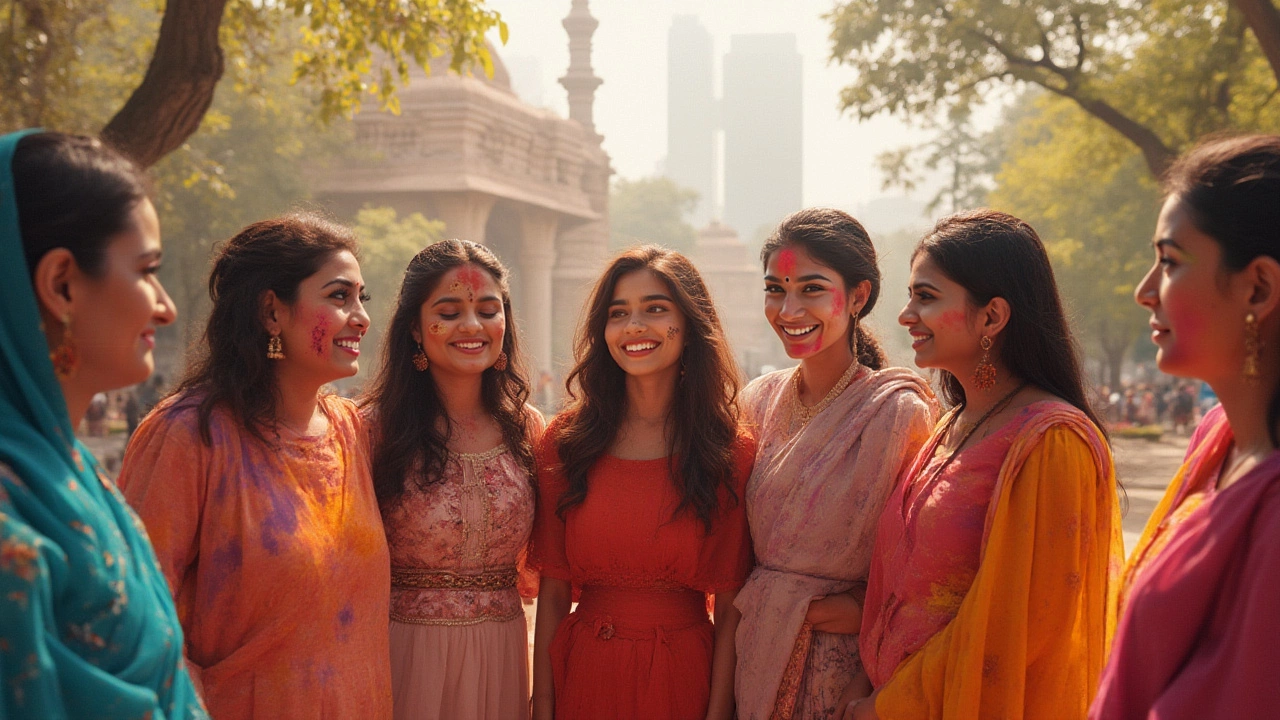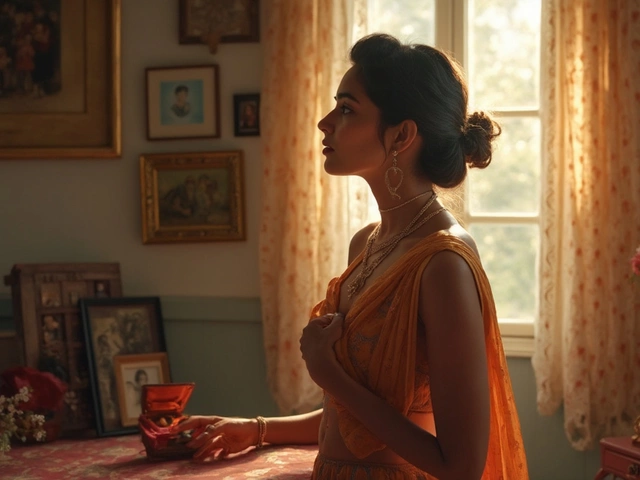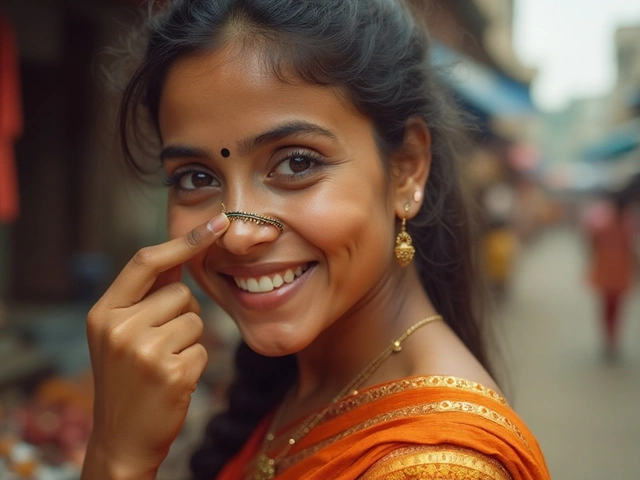
Step onto a crowded street in India, and you’ll spot the unmistakable streak of red in women’s hair partings. Sindoor—a pinch of powder, but a world of meaning packed into one tiny detail. For generations, this vivid sign has split women into two camps: married and unmarried. But today, the lines are blurring. Can an unmarried girl wear sindoor without causing a stir? The answer, like so many cultural riddles, is not as obvious as you might think.
Where Sindoor Began: A Glimpse Into Its History
Imagine living in ancient India. Even before the earliest temple was carved or the first epic was sung, women marked their heads with vermillion. You’d find traces of sindoor in civilisations over 5000 years old—think Harappan sites or terracotta figurines from the Vedic era, proudly painted with red. Sindoor is referenced multiple times in age-old texts like the Rig Veda, where it’s seen as both a cosmetic and a spiritual emblem.
This reddish-orange powder started as a blend of turmeric and lime. Later, it incorporated mercury sulfide to get that iconic hue (though, yes, some modern powders skip the toxic ingredients for safer blends). It travelled through centuries as a marker for married women—a public badge, showing the world that she was taken, safe in her community, and, by some interpretations, blessed by the gods with marital joy.
Interestingly, the earliest kings and queens weren’t the only ones in on the sindoor secret. Farmers’ wives in remote villages, city women in Sarees, even widows and devotees during religious festivals—all have wielded sindoor with their own intent. Purity, fertility, or good luck—each group had its reasons. So, when did rules tighten and the red powder become strictly off-limits for unmarried girls? That lock came much later, shaped by customs, not laws.
If you’re looking for a single answer about when and where sindoor became a no-go for singles, you won’t find one. The switch happened over generations, as cultural norms calcified with the rise of patriarchal family systems. Married women wore sindoor to signal their new status, protect themselves from unwanted attention, and even keep evil spirits at bay. Fast-forward to the present, and the debate about unmarried women wearing sindoor is suddenly alive again, with younger generations questioning ‘why not?’
The Meaning Behind Sindoor: Culture, Symbolism, and Social Signals
Wearing sindoor isn’t just putting on makeup; in many Indian homes, it’s a ritual, nearly sacred. The red powder symbolizes energy (shakti), marital bliss, and—if you ask the older folks—the well-being of one’s husband. The color itself, red, is important in Hinduism: it means strength, passion, and the power to create life.
But sindoor isn’t just symbolic. Socially, it’s a kind of shorthand, an unspoken cue. Much like a wedding ring in Western cultures, seeing sindoor tells the world, at a glance, that the wearer is married. The difference? Everyone can see it, not just those who look closely at your hands. For many across India, Nepal, and Bangladesh, sindoor is as traditional a sign of marriage as mangalsutras, bangles, or toe rings.
Family elders believe the ritual of putting on sindoor after wedding vows strengthens the marital bond, almost like a blessing that follows the couple back home. There’s even a scientific twist in play: Some Ayurvedic beliefs claim applying sindoor at the hair parting calms the mind due to the acupressure point beneath it, although medical backing is still thin on the ground.
So, if an unmarried girl puts on sindoor, it can stir up questions. Some think it invites confusion, some fear it invites unwanted attention, and strict families see it as disrespectful of custom. But many—especially in cosmopolitan cities—see sindoor as one more tradition ready for an upgrade. Symbols gain or lose power with the times, and the new generation doesn’t always follow old playbooks.

Modern Life and Changing Attitudes: Breaking Old Rules
Walk around Mumbai, Kolkata, or even suburbs here in Sydney bustling with the Indian diaspora, and you’ll find a fresh wave—the younger crowd, both women and men, pushing boundaries. Sindoor is showing up as a fashion statement, on runways, in selfies, and even on non-Hindu girls who like the splash of color. In Bollywood, stars sometimes flaunt sindoor for roles or as a style quirk, far removed from any real wedding.
Social media has turbocharged the trend, turning traditions upside-down with hashtags and Instagram filters. Some unmarried girls wear sindoor as part of fancy dress, during festivals, or just for art. In fact, bridal looks are a big hit at school or college events—even those who have never tied the knot get the sindoor just right for the complete effect.
This freedom isn’t spread equally, though. In rural towns with tight-knit communities, the rules still bite. There, wearing sindoor without a husband can trigger gossip, or in rare cases, even anger from relatives. Family honor, village pride, religious interpretations—these still matter in places where tradition rules over trend.
But in cities, attitudes are shifting. Some young women choose to wear sindoor as an act of defiance, a small rebellion against prescriptive gender rules. For others, it’s about self-expression—using an old symbol in a new way. Even the taboo is fading in diasporic communities, where connections to rituals become more flexible over distance and generations.
This isn’t just about fashion, though. Some people take the debate deeper: If a symbol’s meaning changes depending on who wears it, does it lose power—or does it get stronger? That question has no single answer. But it does point to how living traditions change, sometimes with a whisper, sometimes with a shout.
Real Stories: Voices on Both Sides
Talk to ten women, and you’ll get ten opinions about sindoor. Take Nandini, a college student in Delhi, who likes wearing sindoor as part of her festival outfit—she says it’s fun and doesn’t care if the neighbor aunties talk. Her mother, though, disagrees: for her, sindoor is sacred, and using it just as a color doesn’t feel right.
In a 2023 survey by the Indian Research Institute, out of 1,200 women aged between 18 and 30 in major metros, 33% answered that they have worn sindoor at least once, not because they were married, but for style or a festival look. When asked if using sindoor outside marriage was acceptable, half said yes, while 27% said it made them uncomfortable—they felt it cheapened the tradition.
You’ll also hear from artisan sindoor makers—a family trade in Varanasi for generations. Some say business is booming, thanks to the wider appeal, but a few worry the shift is turning rituals into mere fashion. Hindi TV serials often dramatize these debates, and online forums are filled with posts from girls who were scolded for wearing sindoor to college or out with friends.
Married or not, everyone agrees on one thing: the pressure to wear—or not wear—sindoor often comes from family, not law. For some women, giving in to pressure feels like betraying themselves; others see resisting it as unnecessary drama. A few even mention men: a growing group of husbands who encourage their wives to choose what’s comfortable, or even pick colors other than red for fun.
Here’s an interesting little table showing some attitudinal differences by city, collected from an informal poll on a lifestyle website in late 2024:
| City | Support (Unmarried Women Wearing Sindoor, %) | Oppose, % |
|---|---|---|
| Mumbai | 68 | 21 |
| Bangalore | 61 | 28 |
| Patna | 29 | 58 |
| Kolkata | 54 | 32 |
| Delhi | 72 | 18 |
| Lucknow | 31 | 62 |
If you’re in a more conservative area, the pressure is real. But the tide, as you can see, is flowing strongly in another direction across cities that are bigger and more diverse.

Should You Try It? Tips for Navigating Sindoor as an Unmarried Girl
So, can an unmarried girl wear sindoor? Nobody’s going to arrest you for it. But reactions do depend on where you are, who you’re with, and what the folks around you believe. If you’re thinking of giving it a try, here are a few tips:
- Consider the occasion. Sindoor is often seen on festivals, wedding functions, Navratri, and even school dramas. If you’re dressing up for a role or event, people are less likely to bat an eye.
- Family comes first—for lots of us, at least. If your parents or grandparents are invested in the tradition, talk to them before making sindoor a daily accessory. Sometimes, a honest chat helps avoid long-standing drama.
- Fashion matters. Lots of new sindoor powders come in gold, pink, and shimmer—nothing like the classic red of old. If you want the look without the cultural weight, try these colors for trendy, festival looks.
- Watch out for allergies. Some cheap powders contain unsafe dyes or mercury—go for herbal, branded options if you’re trying it out for the first time.
- Handle public reactions. If someone criticizes, keep your cool. Most comments are rooted in habit, not hate. If you’re comfortable explaining your choice, do; if not, walk on. You don’t owe anyone an explanation for harmless self-expression.
- Use social platforms to find like-minded people. Instagram, Facebook groups, and YouTube are loaded with girls sharing different takes on wearing sindoor before marriage—grab some inspiration, or simply see how others handle both support and side-eye.
- Look beyond stereotypes. In many North East Indian communities and South Indian families, sindoor isn’t even worn by married women. Customs differ, so don’t think there’s only one right answer.
Tradition is powerful, but it isn’t set in stone—just ask anyone who’s swapped sarees for jeans or seen their parents eat pizza. If you want to try sindoor, go for it. And if you want to skip it, that’s entirely up to you too. There’s a quiet revolution happening, one streak of red at a time.
For me, watching these debates unfold is a lot like seeing Luna my cat and Sparky my dog fighting for the sunniest spot in the lounge. Both have their ways, both are right—depending on where you’re watching from.


